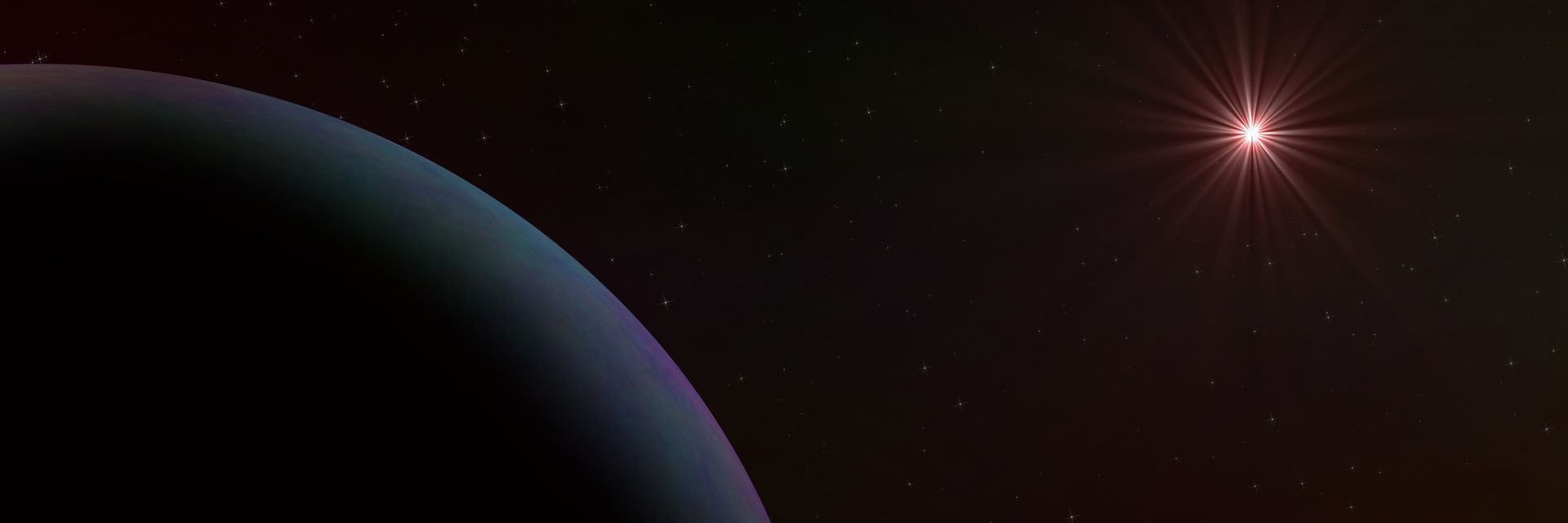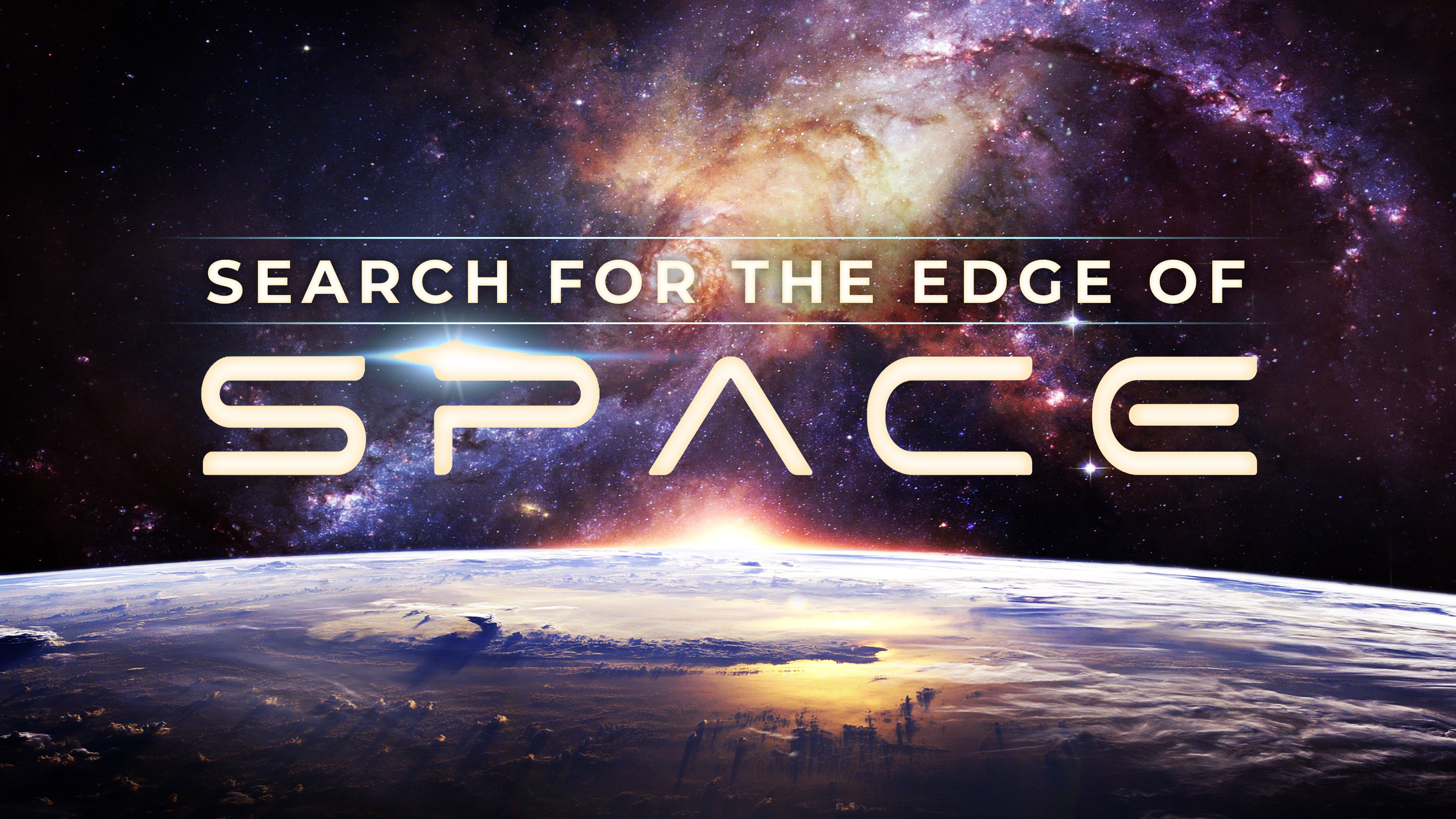To understand interstellar space, it helps to know how a vacuum cleaner works.
◊
Space has bewildered and captivated humans since the dawn of our species. It is seemingly the most vast, unfathomable part of our nearly infinite universe, and yet, we humans just can’t stop attempting the impossible, seeking the unknowable. Though our knowledge of space is, of course, limited, it has grown since we first began studying it scientifically.
Today, there are a few ideas scientists and everyday people alike might agree on about space. It’s dark. It’s dangerous. It’s mysterious, in the sense that the standard model laws of physics do not always apply in space when quantum mechanics must be taken into account. And, because it’s so expansive, despite the fact that every piece of matter ever to exist is contained within it, there are vast stretches of space with next to no matter at all.
This aspect of space is, of course, related to the second point: If you’ve ever seen a movie recreation of a space walk, you know that unprotected exposure to “the vacuum of space” is extremely dangerous to humans. If you’re a veteran sci-fi consumer, you might even take it for granted that space is a vacuum and therefore very dangerous. But does this impression align with reality?
In fact, space is technically not a vacuum – or at least, not a perfect vacuum. But how could this be, considering that space is apparently so empty?
For more on the wonders and mysteries of the cosmos, check out the MagellanTV original documentary Search for the Edge of Space.
What Is a Vacuum in Astrophysics?
In order to answer this question, we first have to consider what a vacuum actually is. A vacuum is typically defined as a space in which there is no matter, or in which the pressure is considerably below atmospheric pressure. If this seems like a loose definition, it’s because, in the real world, it’s impossible to produce a space that is completely devoid of matter – what scientists describe as a “perfect vacuum.” It’s really an ideal and not a description of anything that is possible or that has actually been created, though parts of space and cryogenic vacuum chambers do get close.
But why might we be so concerned about vacuums in the first place? In fact, the power of vacuums is derived from the power of pressure: If you’ve ever experienced ear-popping during travel, you’ll know how susceptible the human body is to changes in atmospheric pressure. This extends beyond the body.
Because matter tends to move from areas of high pressure to areas of low pressure, these low-pressure, matterless spaces tend to powerfully “suck” matter toward them. This is, indeed, how a vacuum cleaner works. Though not a perfect vacuum by any means, household vacuums work by using propeller blades to move air out of the machine, creating a low-pressure partial vacuum inside. This forces air into it, bringing with it any matter in its wake – including the dirt, dust, and hair the machines are so often used to clean.
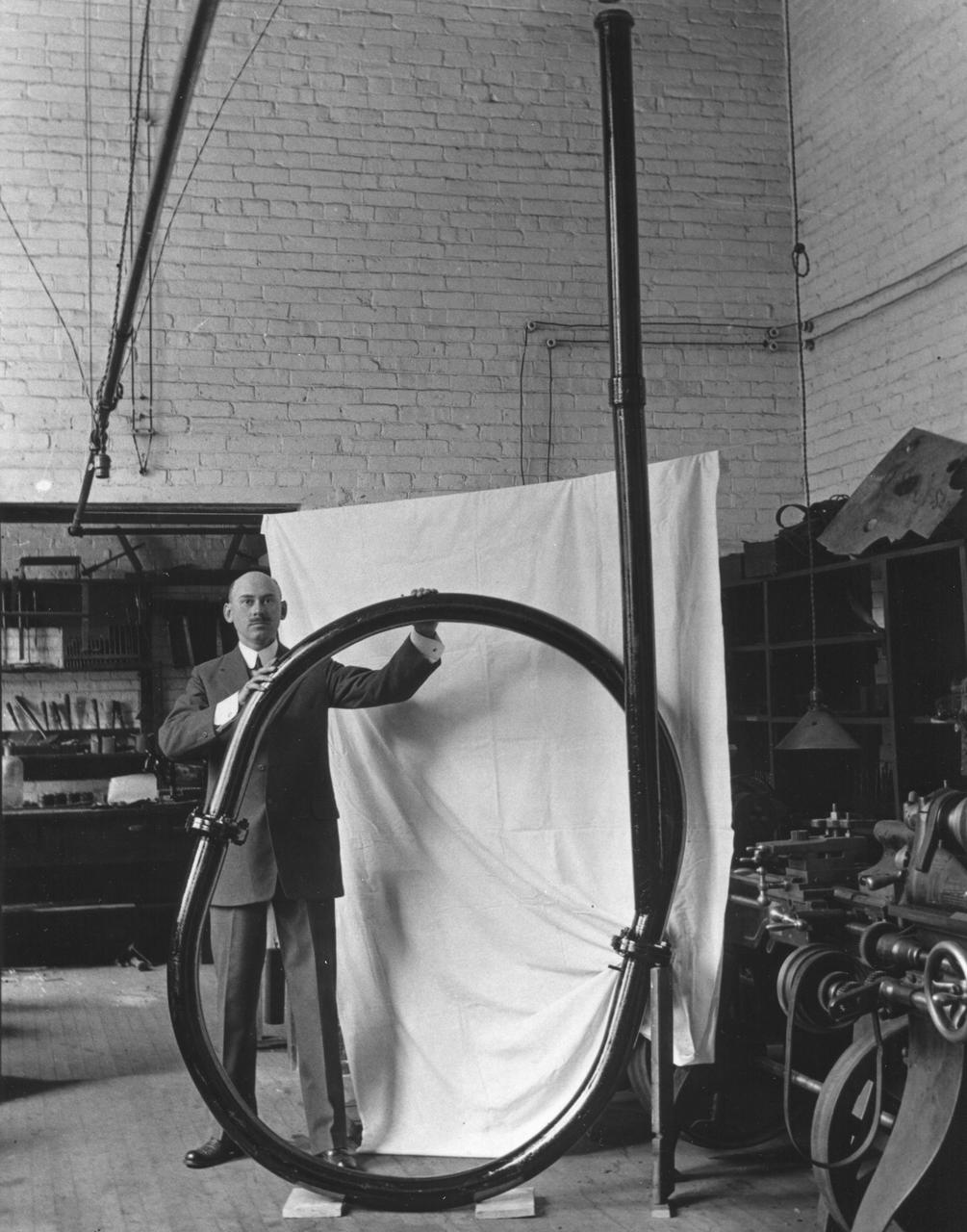
Robert H Goddard, 1916, with the first vacuum tube built to research rocket efficiency (Credit: NASA Goddard)
Why Isn’t Space a Perfect Vacuum?
If space is so empty, how is it not a perfect vacuum? First of all, different parts of space are estimated to have different matter densities. While interplanetary space is estimated to have only about 11 molecules per cm3 (as compared to 1019 molecules per cm3 inside a vacuum cleaner), interstellar space has one molecule per cm3, and intergalactic space has 10-6 molecules per cm3.
To put those comparisons into perspective, we might imagine the volume of an average human represents one molecule. Given that equivalency, in order to equal the 1019 molecules that fill a cm3 inside a vacuum cleaner, you’d need at least enough humans to fill the entire volume of Earth (~1.6x1014 human-volumes could fit into the volume of the Earth). To equal the 11 molecules per cm3 in interplanetary space, you’d need 11 humans – easy. And to equal the 10-6 molecules per cm3 in intergalactic space? That would be approximately equal to the pinkie fingernail of one of those 11 humans.
This is all to say that, depending on what part of space you’re talking about, matter density can vary. In general, space has an extremely low – but nonzero – matter density. Because there is some, if very little, matter in space, it cannot be considered a perfect vacuum.
This isn’t the only reason space isn’t a perfect vacuum, though. Outside of the odd hydrogen atom, even deep, intergalactic space is populated by something called virtual particles.
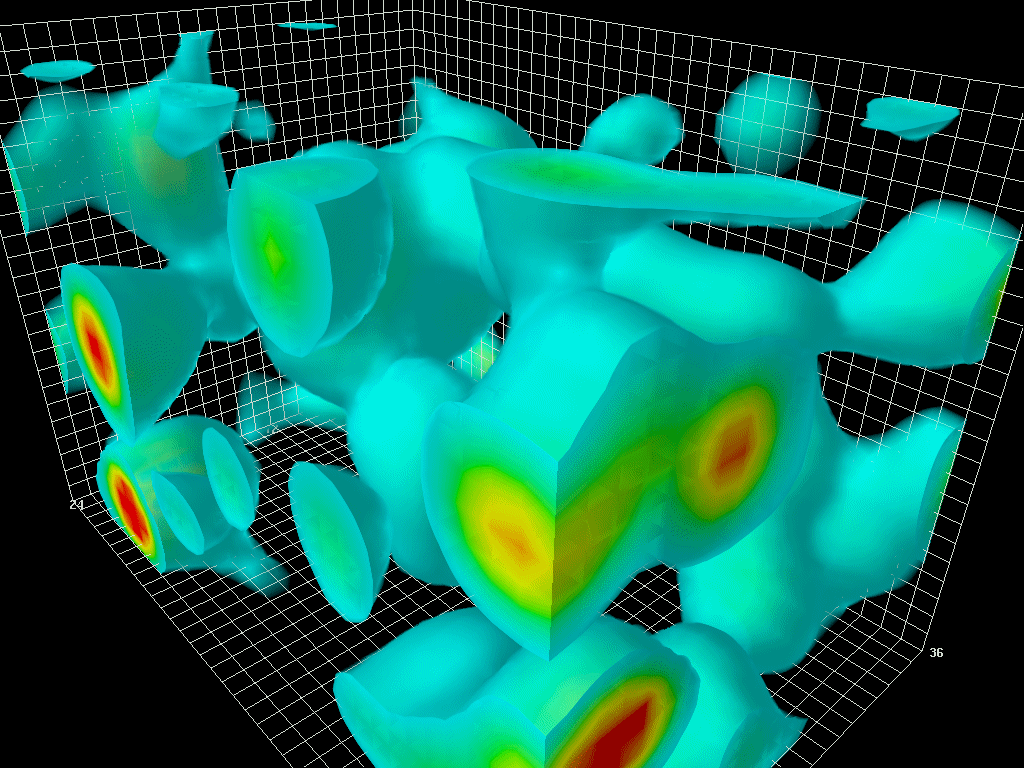
Energy fluctuations in a vacuum (This file is reproduced under the Creative Commons Attribution-Share Alike 4.0 International license. By Derek Leinweber, no changes made.)
What Are Virtual Particles?
“Virtual particles” can be a difficult concept to grasp, a strange quirk of the unintuitive rules of quantum mechanics. Harvard theoretical physicist Matt Strassler does his best to describe these complicated particles. In his words,
“The best way to approach this concept, I believe, is to forget you ever saw the word ‘particle’ in the term. A virtual particle is not a particle at all. It refers precisely to a disturbance in a field that is not a particle. A particle is a nice, regular ripple in a field, one that can travel smoothly and effortlessly through space, like a clear tone of a bell moving through the air. A ‘virtual particle,’ generally, is a disturbance in a field that will never be found on its own, but instead is something that is caused by the presence of other particles, often of other fields. …
“[In comparison:] If something makes a real particle, that particle can go off on its own across space. If something makes a disturbance [or, a ‘virtual particle’], that disturbance will die away, or break apart, once its cause is gone. So it’s not like a particle at all, and I wish we didn’t call it that.”
The key here is this: Virtual particles are ever-present in space. Though they “pop in and out of existence,” or “die away” only to reappear, as Strassler puts it, they reliably influence the amount of mass present even in deep space, keeping it from being a true, perfect vacuum.
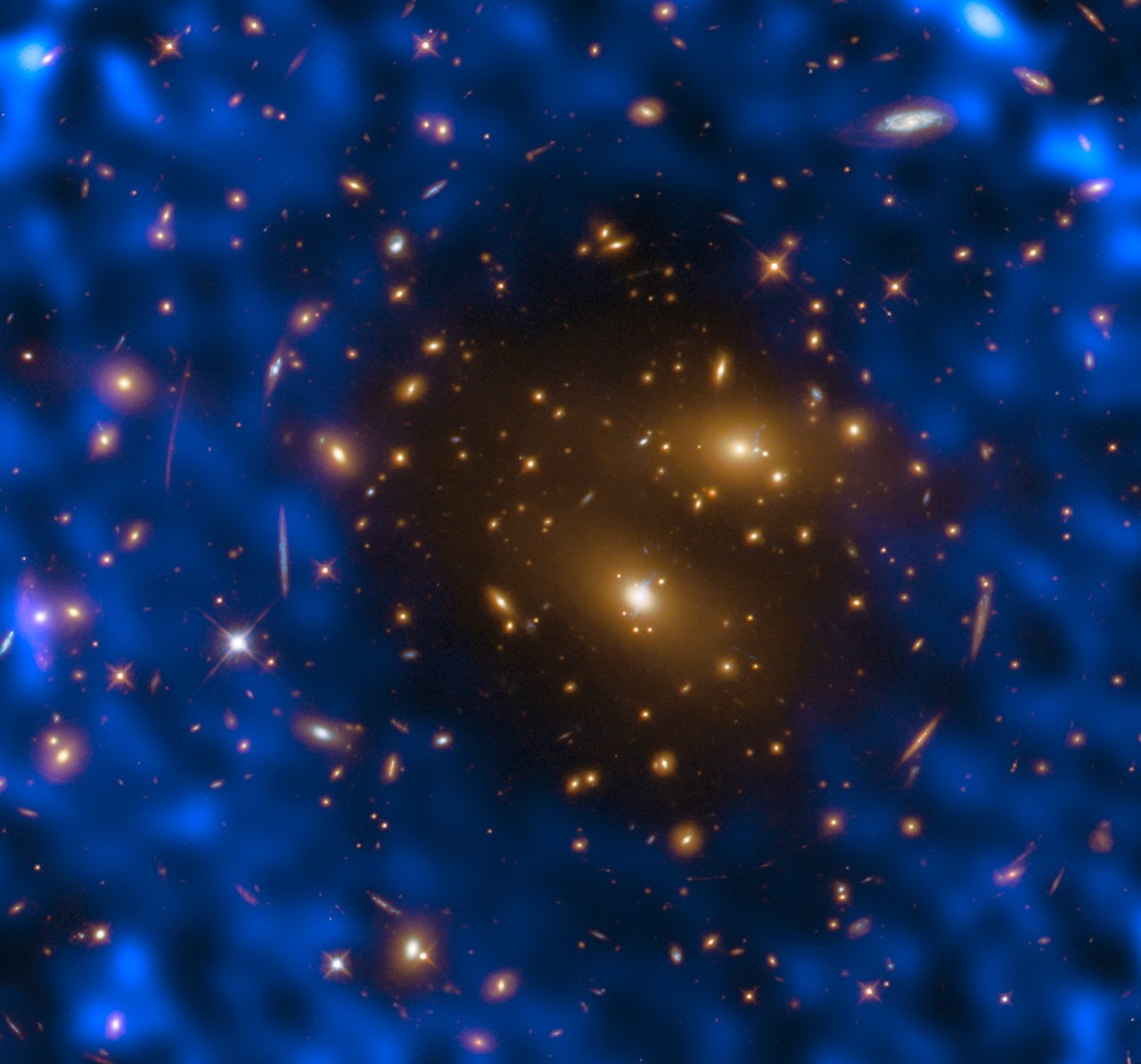
Shown in purple, cosmic microwave background (CMB) permeates the universe. (Credit: NASA Goddard)
How Does Gravity Affect a Vacuum in Space?
Another important factor involved in creating the near-vacuum that exists in space is gravity. “Every particle of matter, no matter how small, exerts a gravitational attraction on all other particles of matter. … Given enough time, gravity makes giant clouds of gas in space condense down despite the gravitational force being so weak,” says Dr. Christopher S. Baird, a professor of physics at West Texas A&M University. Though, at the beginning of the universe, the Big Bang left space full of a nearly uniform soup of matter, in the billions of years since then, gravity has condensed much of that matter. This has created the universe we know today, but it has also created vast stretches of space in which matter is almost entirely absent, sucked out and condensed elsewhere. Over time, gravity will continue to increase the amount and degree of emptiness in space.
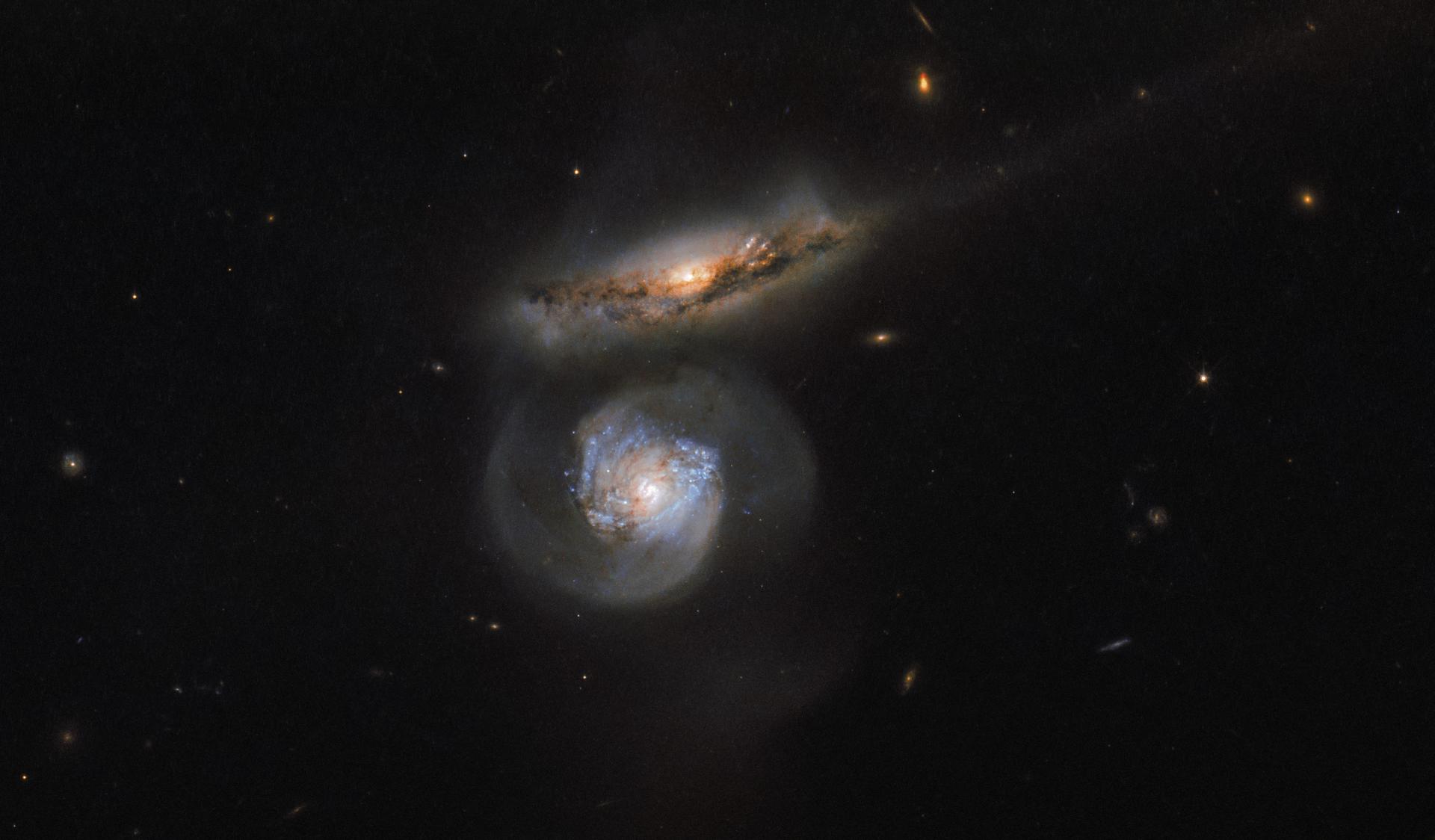
Hubble’s megamaser galaxy seems to float below a companion galaxy. (Credit: NASA Goddard)
Want to Learn More About Cutting-Edge Space Research?
If you, like so many before you, find yourself bewildered and captivated by the vastness and (almost) emptiness of space, try watching Search for the Edge of Space. There, you’ll find an exploration of the cosmos that exists far beyond what we can observe – and maybe, beyond what we can even imagine.
Ω
Sari Wagner is a contributing writer for MagellanTV. Originally from Philadelphia, she is a graduate of Kenyon College with a degree in neuroscience and studio art. She is passionate about bringing important and interesting scientific information back down to Earth.
Title Image credit: natanael755, via Pixabay
